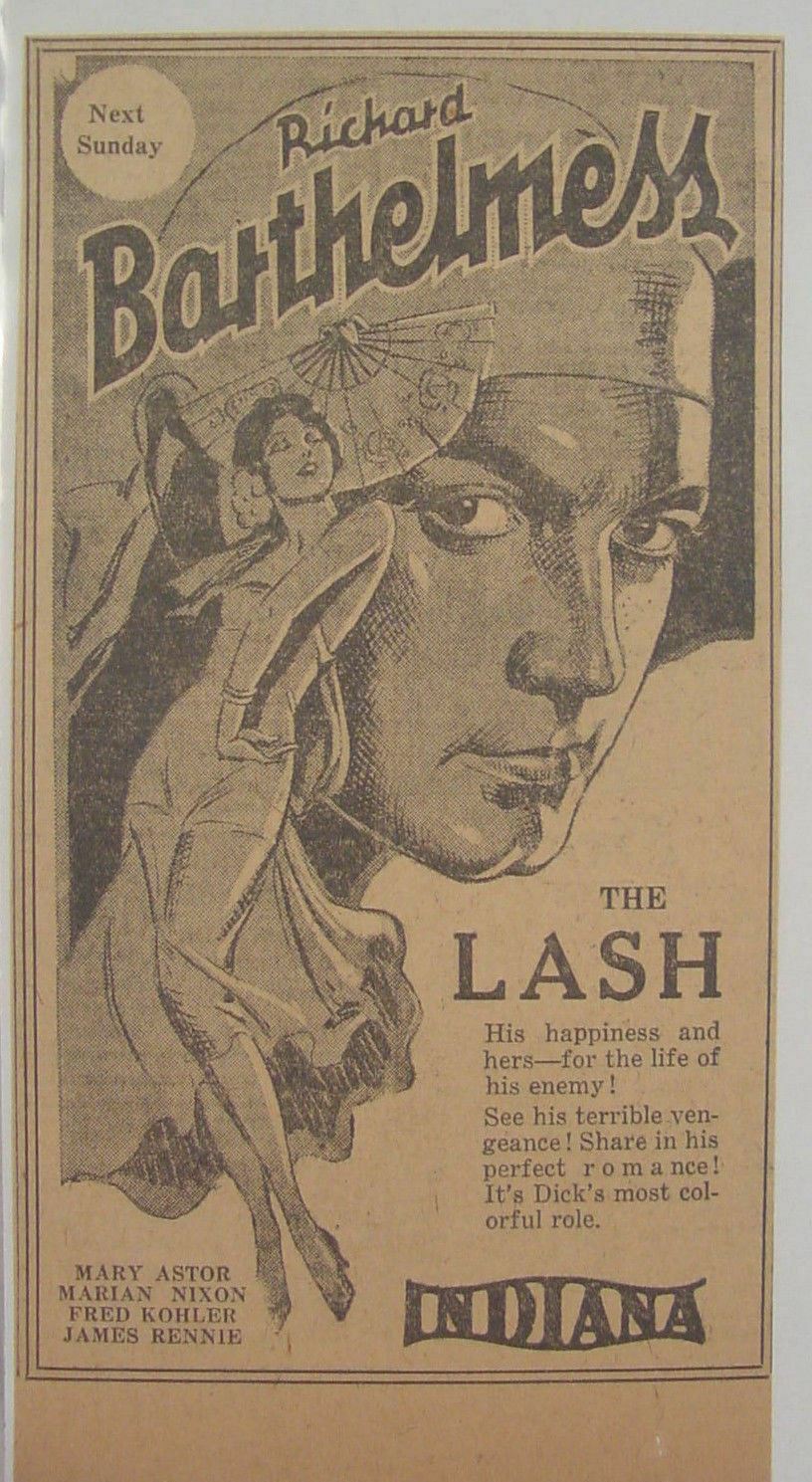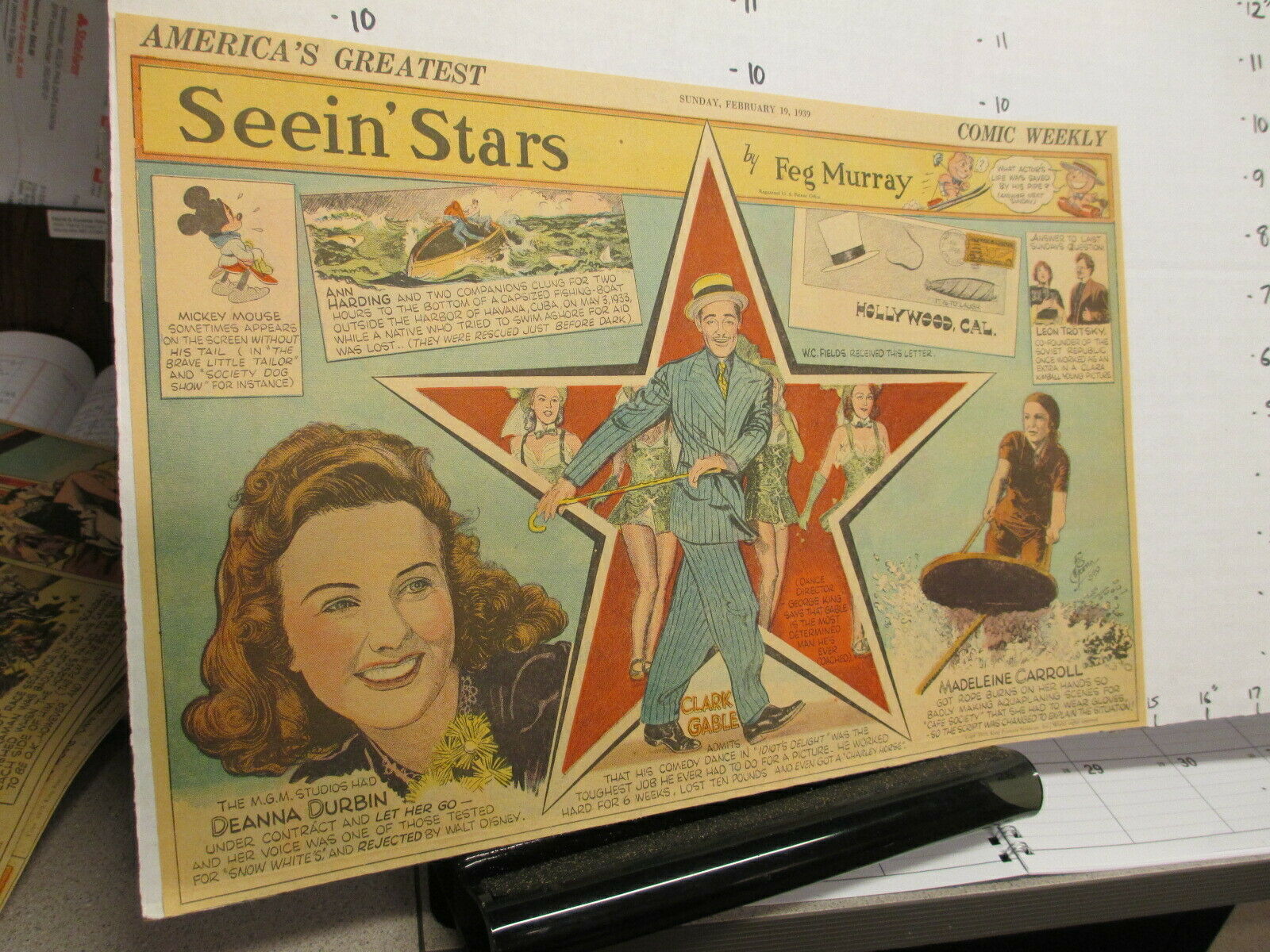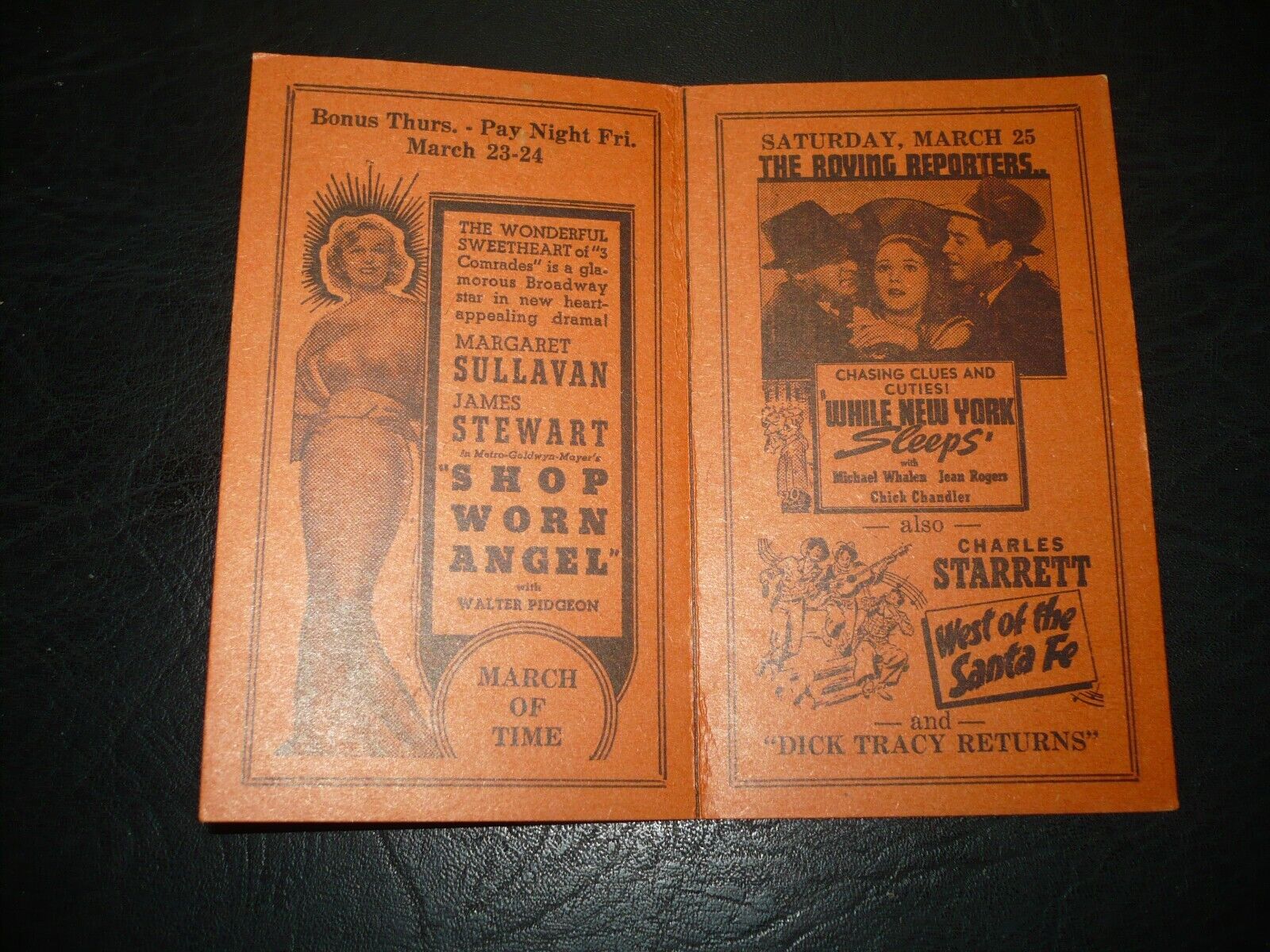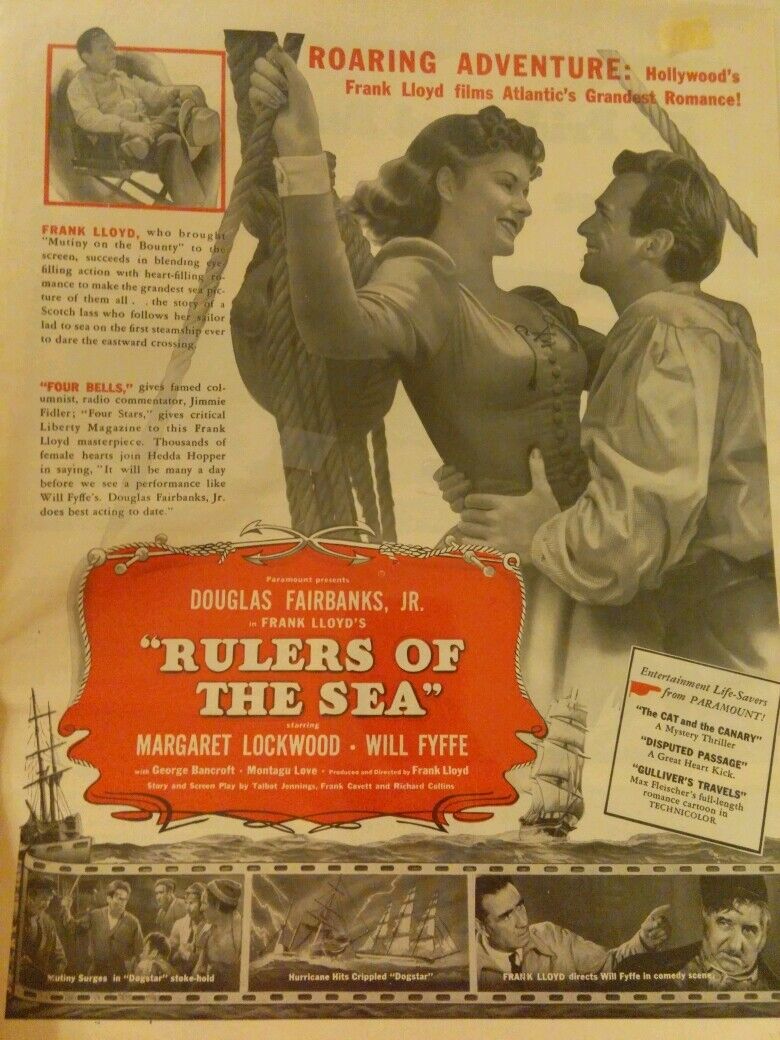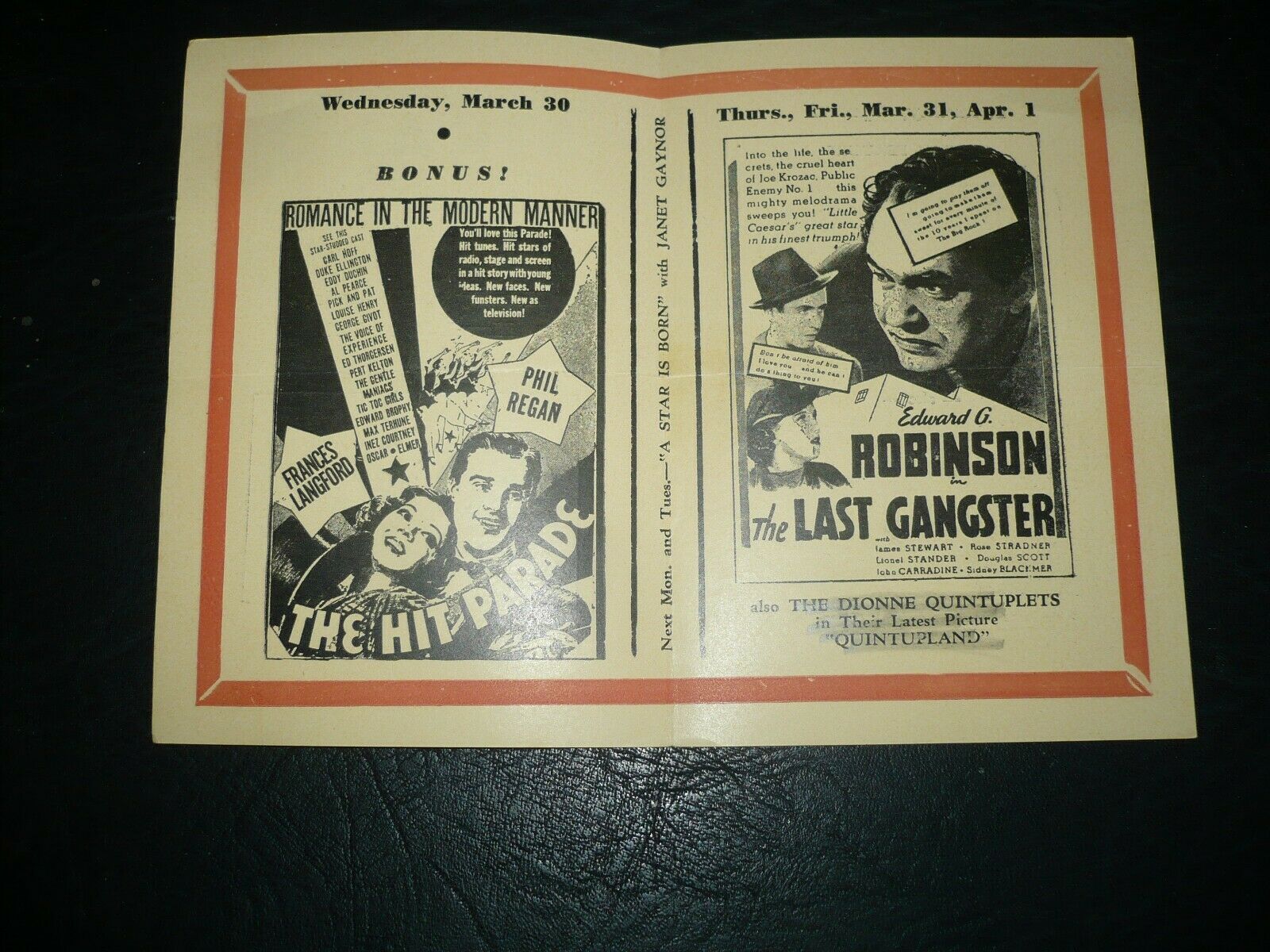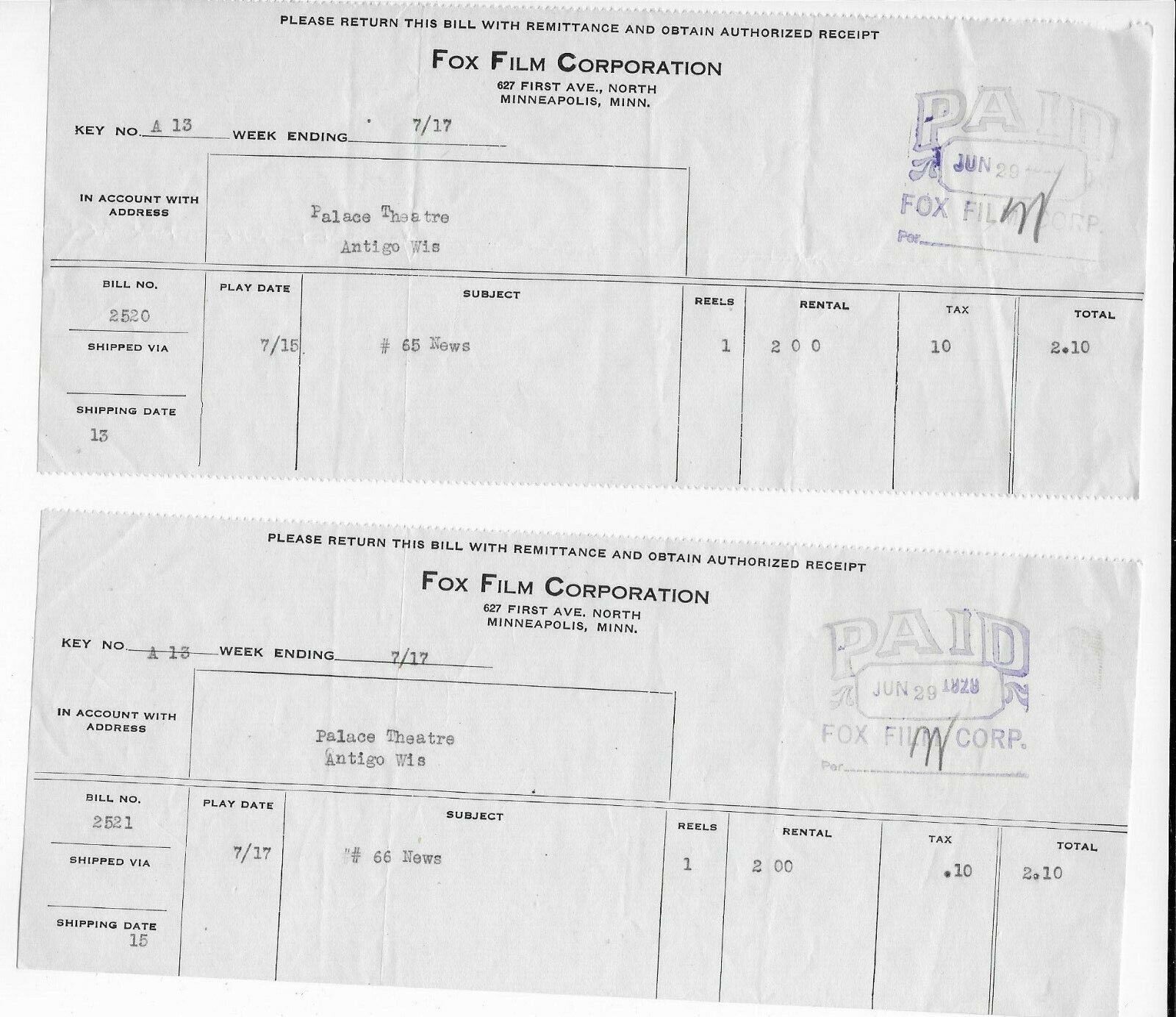-40%
LORETTA YOUNG - RALPH FORBES "BEAU IDEAL" 1932 MOVIE HERALD
$ 13.19
- Description
- Size Guide
Description
Original Herald from Uruguay and Argentina in South America. This kind of gorgeous heralds are quite scarce, they were printed by a local distributor (Max Glücksmann) just during a short period of time between the late 1920's and the late 1930's. Usually printed on both sides, in full color or in duotone inks featuring Art Deco style, they show great graphics from the films advertised. Most advertise a single feature movie, while a few examples advertise double movie programs.Local Title:
BEAU IDEAL
Original Title:
BEAU IDEAL
Year / Country:
1931 - USA
Company:
R.K.O. Radio Pictures
Director:
Herbert Brown
Starring:
Loretta Young, Frank McCormack, Ralph Forbes, Lester Vail, Don Alvarado, Irene Rich
Size (unfolded):
230 mm x 170 mm
Condition:
Excellent
Herald advertises this film as shown at
CINE DORE
from Uruguay on
Sunday, October 25, 1931.
Comments:
"Beau Ideal" is a 1931 American pre-Code adventure film directed by Herbert Brenon and released by RKO Radio Pictures. The film was based on the 1927 adventure novel "Beau Ideal" by P. C. Wren, the third novel in a series of five novels based around the same characters. Brenon had directed the first in the series, "Beau Geste", which was a very successful silent film in 1926. The screenplay was adapted from Wren's novel by Paul Schofield, who had also written the screenplay for the 1926 "Beau Geste", with contributions from Elizabeth Meehan and Marie Halvey.
The film starred Ralph Forbes (reprising his role as John Geste from the 1926 "Beau Geste"), Loretta Young, and Irene Rich. The other lead, Lester Vail, was making his film debut, after he replaced Douglas Fairbanks, Jr., who had originally been selected for a principal role in the film. Exteriors were filmed on locations in Arizona and Mexico, while the interiors were filmed on the RKO lot in Hollywood, and production took approximately five weeks to film. Post production would take place in November and December 1930, before the film was released on January 16, 1931.
Unfortunately, the film was neither a critical nor financial success, losing over 0,000 for RKO. In addition, reviews for the film were mixed, with most being not kind to the film. Some modern sources also consider the film to be one of the worst produced by RKO that year. Although the film was not a success, it did introduce two technological advancements to film: the concentrator microphone and the Dunning process.
Plot:
The last two surviving members of a French Foreign Legion detachment, who know each other as Smith and Brown, are consigned to a grain pit in the desert to die slowly. As they await death the two soldiers eventually realize that they were childhood friends, John Geste (Ralph Forbes) and Otis Madison (Lester Vail), respectively.
Once they recognize one another, they have a series of flashbacks to their boyhood friendship in England. These memories are followed by Otis' memory of his return to England and discovery that John has joined the French Foreign Legion. While in England, Otis also learns that Isobel Landon (Loretta Young), who he is enamored with, is betrothed to John. Despite his feelings for her, he vows to follow John to Africa and return him to England. He makes arrangements and leaves for the dark continent.
Upon his arrival in Africa, Otis, and his detachment, are ordered to garrison a French fort in the desert. As hardships ensue, his fellow legionnaires begin to mutiny. Otis does not participate in the uprising, instead he attempts to get the other soldiers to cease their rebellion. When the uprising is eventually thwarted, the commanders do not believe Otis' story, and assume that he was part of the rebellion, and send him to a penal detail. While part of that detail, he is again falsely accused, and is thrown into the pit, along with John, which puts them both in the pit where the film begins.
Back in the present, as they are about to die, they are miraculously rescued by a passing band of Arabs. Unknown to the two friends is that the Arabs intend to use them as bait to draw their fellow legionnaires into a death trap. Fortunately for the friends, the girlfriend of the Emir, Zuleika (Leni Stengel), also known as "the Angel of Death", is attracted to Otis. Otis uses that attraction and agrees to marry her, after which Zuleika informs him of an impending attack by the Arabs on the nearby fort, and then helps Otis and John to escape. The two legionnaires race to the fort, and help to repel the Arab attack, which earns both of them their freedom.
Otis now has to face up to his commitment to Zuleika. However, she has now transferred her affections to Major LeBaudy (Hale Hamilton), which allows Otis to be relieved of his matrimonial duties. Free from any entanglements, the two friends return to England. Once there, John releases Isobel from their betrothal, which clears the way for her and Otis to marry.


